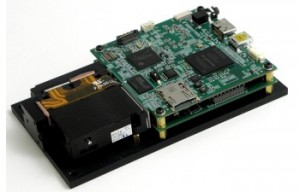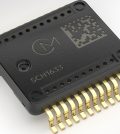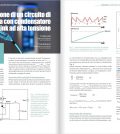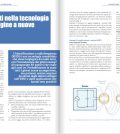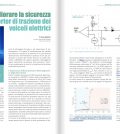MEMS – Answers provided by Kent Novak, senior vice president and general manager of DLP Products, Texas Instruments

EONEWS: What are your opinions regarding the major trends for this market (slowing, growing, booming…)?
NOVAK: The largest, traditional market for Texas Instruments DLP technology is projectors for classrooms, conference rooms and home theaters. This market traditionally grows at 4%-6% per year and we expect that to continue.
We are also seeing significant growth opportunities in new applications for DLP technology including embedded projection in enterprise and consumer electronics; automotive applications such as heads up display (HUD) and adaptive headlights; and non-display advanced light control solutions including 3-D printing, optical measurement and spectroscopy.
To put things into perspective, just 10 years ago, developers were disassembling projectors to get access to the TI DLP chips inside. Engineers saw the great potential of our technology. Now, we offer a full portfolio of DLP chips and evaluation modules (EVM) so people can have easy access to work with our unique, spatial light modulation technology.
NOVAK: Today’s TI DLP technology is based on years of proven, award-winning experience. The fast speed and reliability of our products gives customers a rock-solid platform for future innovation and the creation of new market categories. We also nurture a mature global ecosystem of display and advanced light control solutions to support current and evolving customer needs.
EONEWS: What are you doing in order to implement your strategies (partnership/agreements, new acquisitions, investments in activities like R&D, people….)?
NOVAK: For more than two decades, TI DLP products have been innovating with flexible and programmable optical chipsets designed to solve some of the world’s most complex display and light control issues. Collaboration with our ecosystem, which helps developers and customers accelerate their innovative product development and time to market, truly sets us apart.
Our DLP Design Network, a group of independent, well-established companies, provides hardware and software integration, optics design, system integration, prototyping, manufacturing services, and turnkey solutions to a worldwide customer base. Our leading ecosystem of optical engine manufacturers in the industry eliminating the need for developers to have optics expertise.
In addition, our powerful yet easy-to-use development tools, such as our TI DLP LightCrafter and TI DLP NIRScan evaluation modules, software and reference designs, enable developers to reduce design cycles and costs and accelerate time to market.
We’ve also made enhancements to ti.com and our TI Store to make our website easier and more intuitive for our customers. By using a my.ti login, customers can set preferences, customize their experience and based on their interests, see related products and resources, similar to popular retail websites we all know and use every day.
EONEWS: What are the most important applications?
NOVAK: Since the creation of digital cinema in the late 1990’s, DLP technology has continued to be the preeminent technology for digital cinema systems and is deployed in nearly 90% of all digital cinema’s in world. DLP continues to be a leader in this space, especially in the new technology area of solid state projectors.
TI DLP technology delivers a range of display and advanced light control applications spanning industrial, automotive, enterprise and consumer markets. DLP video and data display products incorporate bright, efficient, high definition projection in the smallest devices, including pico projectors, digital signage and wearables. Our advanced light control products enable fast and accurate light steering solutions for optical sensing applications, including 3D printing, 3D scanning and spectroscopy. In addition, DLP automotive technology, which includes head-up display, interactive center consoles and adaptive headlights, delivers compelling, high-brightness display systems to enhance the complete driver experience.
EONEWS: Which are the key factors that set your company apart from the competition?
NOVAK: TI DLP products is the global leader in the development and manufacture of fast, flexible and reliable display and light control solutions. All of today’s DLP technology is based on award-winning, proven DLP Cinema® technology, which has received multiple Emmy Awards from The Academy of Television Arts and Sciences.
Whether it is cinema projection, HD projection from small form-factor electronics, 3D printing or spectroscopy, our micomirrors offer the advantage of fast pattern rates of up to 32 kHz. This fast imaging speed of DLP chips, when combined with applications like wearables, mobile projectors and medical devices, results in highly reliable, efficient, and accurate systems.
EONEWS: And in the middle/long term (if you have a crystal ball!)?
NOVAK: By continuously providing all the tools, documentation, and ecosystem at ti.com/dlp, developers will come up with unique uses of the DLP technology in markets and applications that we have never dreamed about.
Edited by the Editorial Staff
Contenuti correlati
-
Il nuovo centro di distribuzione dei prodotti di TI
Texas Instruments (TI) ha aperto un nuovo centro per la distribuzione dei prodotti a Dreieich, nei pressi di Francoforte. Il nuovo impianto, che ha un’estensione di 9.000 metri quadrati, dispone di nuove funzionalità di automazione. Può infatti...
-
Un nuovo sensore Murata per l’automotive
SCH1633-D01 è un nuovo sensore (giroscopio e accelerometro) di Murata basato sulla tecnologia MEMS. Questo componente amplia l’offerta di dispositivi con 6 gradi di libertà (DoF – Degree of Freedom) del produttore e può essere utilizzato per...
-
Progettazione di un circuito di precarica attiva con condensatore DC-Link ad alta tensione
Questo articolo presenta il processo di progettazione necessario per calcolare gli adeguati valori dei componenti che contribuiscono a ottenere il profilo di carica desiderato Leggi l’articolo completo su EO 521
-
I miglioramenti nella tecnologia RFID danno origine a nuove applicazioni
L’identificazione a radiofrequenza (RFID) è una tecnologia consolidata che viene impiegata da molti anni, con l’introduzione dei primi esempi di transponder RF passivi che risale agli anni 70. Probabilmente la usate tutti i giorni senza accorgervene, ma...
-
Come migliorare la sicurezza negli inverter di trazione dei veicoli elettrici
I progettisti di veicoli elettrici possono aumentare la sicurezza e l’affidabilità dei sistemi a inverter di trazione monitorando la soglia di tensione del gate Leggi l’articolo completo su EO520
-
Finanziamenti per 1,6 miliardi per Texas Instruments
Texas Instruments (TI) ha firmato un memorandum d’intesa preliminare non vincolante con il Dipartimento del Commercio degli Stati Uniti per un finanziamento diretto fino a 1,6 miliardi di dollari. Questa operazione rientra nell’ambito del CHIPS and Science...
-
Un processore con LPDDR4 integrata accelera lo sviluppo di applicazioni
Il System-in-Package rappresenta una valida scelta di progettazione e può essere determinante per lo sviluppo di svariate applicazioni e dispositivi di tipo general purpose, nonché per soluzioni compatte e ad alte prestazioni Leggi l’articolo completo su EO519
-
Progettazione di un’applicazione per supportare ampi intervalli di tensione di ingresso e della batteria
Oltre a contribuire a ridurre i tempi di progetto, l’utilizzo di un caricabatterie ad ampio VIN e ampia VOUT permette di valutare nuove tecnologie, come la ricarica bidirezionale a energia solare Leggi l’articolo completo su EO519
-
Texas Instruments e Delta Electronics insieme per le soluzioni per EV
Texas Instruments (TI) ha stretto una collaborazione a lungo termine con Delta Electronics per creare soluzioni di ricarica di bordo e alimentazione di nuova generazione per veicoli elettrici (EV). Questa collaborazione sfrutterà le capacità di ricerca e...
-
Un eBook sui MEMS da Mouser e Murata
Mouser Electronicse Murata hanno presentato un nuovo eBook sui sistemi microelettromeccanici (MEMS). Intitolato “9 Industry Experts Discuss MEMS Technology“, il nuovo eBook offre una serie di prospettive sui vantaggi della tecnologia dei MEMS per applicazioni nei dispositivi...


